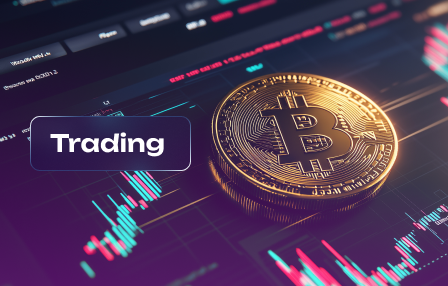OTC Forex Trading – How It Differs from Stock Exchanges
March 19, 2025
Choosing between decentralized financial markets and formal trading platforms requires a grasp of their inherent distinctions. While both avenues facilitate the exchange of assets, the mechanisms underpinning them create unique experiences for participants.
Transactions in decentralized environments occur directly between parties without intermediaries. This contrasts sharply with centralized venues where regulations and oversight govern operations, ensuring transparency but also introducing certain limitations. The freedom to negotiate terms directly can lead to favorable conditions for informed traders.
The market hours differ significantly as well; decentralized transactions often take place around the clock, granting flexibility that traditional platforms may not provide. This continuous availability can be advantageous for those looking to capitalize on real-time price fluctuations.
Another notable distinction lies in the types of assets available. While formal marketplaces typically focus on equities and derivatives tied to company performance, decentralized environments offer a broader range of instruments, including currency pairs and commodities. Understanding these variances can empower investors to make more informed choices based on their specific objectives and risk tolerance.
Market Accessibility and Hours
The foreign currency market operates 24 hours a day, five days a week. This continuous accessibility allows participants to engage in transactions at any time, facilitating a high level of liquidity. The ability to trade across different global sessions–Asian, European, and American–provides flexibility unmatched by traditional financial markets.
Conversely, conventional equity markets have specific operating hours that can restrict trading opportunities. Typically, these venues are open during regular business hours, leading to potential gaps in liquidity outside these times. For investors seeking to capitalize on immediate market movements or news events, this limitation can be a disadvantage.
While stock markets may offer after-hours trading, the liquidity often diminishes significantly compared to regular hours. This can result in wider spreads and less favorable execution prices for transactions. In contrast, the forex arena maintains robust activity even during off-peak periods, ensuring tighter spreads and better pricing for traders.
Overall, the round-the-clock nature of currency markets offers unparalleled access and responsiveness to global economic shifts, making it an appealing choice for those looking to maximize their trading potential.
Regulatory Frameworks Explained
Understanding the regulatory environment is crucial for participants in different markets. The oversight in centralized platforms tends to be more structured, often governed by specific authorities ensuring compliance with stringent rules. These regulations foster transparency and reduce the risk of fraud, creating a secure atmosphere for transactions. This oversight can lead to increased liquidity, as market players feel more confident in their dealings.
In contrast, decentralized trading systems operate with less regulation. While this can appeal to those seeking flexibility and lower barriers to entry, it raises concerns regarding the protection of participants. The lack of strict oversight might result in higher volatility and risks associated with price manipulation or inadequate recourse in disputes. Thus, individuals engaging in these markets must exercise greater caution and conduct thorough research.
The differences in regulatory frameworks impact trading dynamics significantly. Participants on regulated platforms benefit from mechanisms like investor protection schemes, which are typically absent in their less regulated counterparts. Therefore, understanding these frameworks is key to making informed decisions that align with individual risk tolerances and investment goals.
Trading Costs Comparison
Focus on the transaction costs inherent in various platforms. In decentralized markets, spreads often prevail as the primary cost factor, impacting overall profitability. Highly liquid environments usually present tighter spreads, benefiting traders with lower expenses per deal.
In contrast, centralized venues may charge commissions alongside spreads. These fees can vary significantly based on the broker’s structure–some offer fixed rates while others employ a variable model influenced by market conditions and trading volume.
Consider additional charges such as overnight financing or rollover fees, particularly in leveraged positions. Unlike direct market interactions where such costs can fluctuate based on liquidity and demand, exchange-based transactions may have more predictable fee structures due to regulatory oversight.
Analyzing typical transaction costs across both markets reveals that while decentralized platforms might entice with lower upfront fees, hidden costs can emerge during volatile periods. Comprehensive fee analysis should include not only explicit charges but also implicit costs linked to slippage and execution delays.
For informed decisions, evaluate the total cost of ownership for your chosen approach. Understanding these nuances will guide you towards more strategic entry and exit points within your investment journey.
Liquidity Levels and Impacts
Understanding liquidity is pivotal for making informed decisions in financial markets. Here’s how liquidity varies between these two environments:
- Market Depth: The decentralized format allows for higher market depth in currency trading, enabling larger transactions without significantly impacting prices. In contrast, traditional markets may exhibit lower depth, particularly for less popular stocks.
- Order Execution: Currency markets often provide faster order execution due to high trading volumes. This speed can be a competitive advantage during volatile conditions, unlike certain stock scenarios where delays may occur.
- Price Swings: The decentralized nature leads to reduced price swings in foreign exchange compared to stocks, which might experience sharp movements due to limited available shares or sudden news affecting specific companies.
- Time Sensitivity: Liquidity levels influence the ability to enter or exit positions swiftly. Currency markets generally offer greater flexibility, while some equities may require more time for substantial transactions, especially in off-peak hours.
- Market Sentiment: High liquidity facilitates better reflection of market sentiment. Traders can execute strategies based on real-time data with minimal slippage, whereas the stock sector may see sentiments change drastically with fewer available trades.
In conclusion, acknowledging these factors will enhance your strategic planning and risk management across different market types.
Types of Instruments Offered
In the realm of financial markets, the variety of instruments available creates distinct avenues for participation. Currency pairs are predominant in decentralized networks, allowing traders to speculate on fluctuations in value between different currencies. This market thrives on volatility and real-time transactions that define its liquidity.
Conversely, centralized platforms primarily offer shares in companies, options, and exchange-traded funds (ETFs). Shares provide ownership stakes, while options grant the right, but not the obligation, to buy or sell at predetermined prices. ETFs allow for diversified exposure across multiple assets, enhancing risk management strategies.
The flexibility in choosing instruments can significantly impact trading strategies and objectives. Participants looking for rapid execution and higher leverage may lean towards currency pairs. Alternatively, those seeking long-term investments or dividend income might prefer equities and funds. Understanding these offerings helps in aligning trading preferences with market dynamics.
Moreover, the liquidity associated with these instruments varies considerably. Currency markets often exhibit superior liquidity due to their global nature and 24/5 operational hours. In contrast, equity markets can experience fluctuations in liquidity based on the time of day and specific stock popularity.
Selecting the right instrument is crucial; it influences transaction costs, potential returns, and risk exposure. Assess your goals and choose wisely to navigate the complexities of these diverse financial landscapes.



